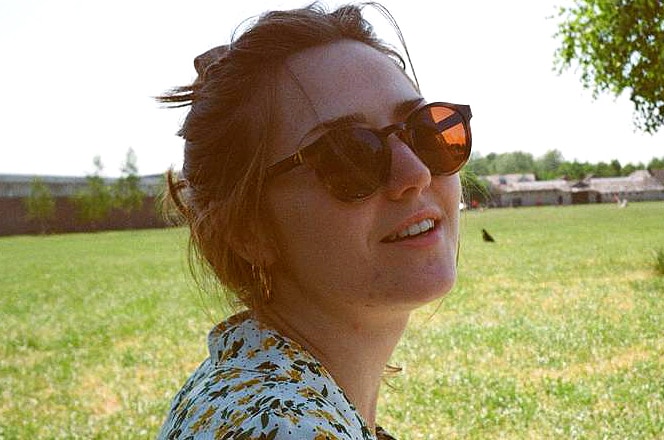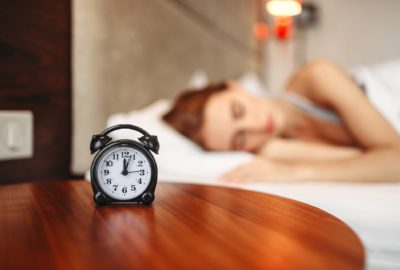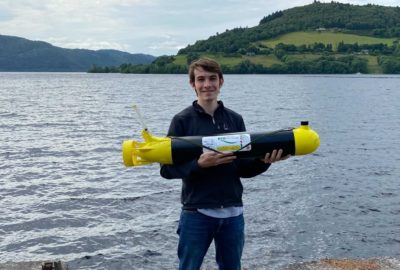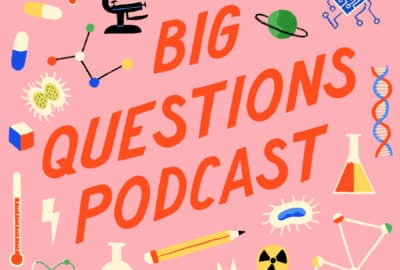How can a simulation help treat kidney stones?
Wednesday 30th Nov 2022, 12.30pm
Around 10% of us will experience kidney stones at some point in our life. They occur when waste products in the blood form small crystals, which gather together in the kidneys to form hard lumps. Small kidney stones (<4mm in diameter) usually pass through the body naturally, with no medical intervention required. However, larger kidney stones may require treatment. For example, a laser beam can be used within the kidney to break a large stone up into smaller pieces. During this laser treatment, bubbles are formed in the kidneys – which can be a help or a hindrance. In this episode, we chat to applied mathematician Sophie Abrahams, who uses mathematical modelling to explore the best ways to pulse a laser to achieve the ‘best bubbles’ during the treatment of kidney stones.
(Music)
Emily Elias: Kidney stones, they’re pretty common. One in ten will face the prospect of trying to pass a tiny stone through their urethra and that experience can range from painful to requiring surgery. On this episode of the Oxford Sparks Big Questions podcast, we’re asking, “How can a simulation help treat kidney stones?”
Hello, I’m Emily Elias and this is the show where we seek out the brightest minds at the University of Oxford and we ask them the big questions. For this one we have found a researcher who is ready to harness the power of mathematics to make treatment better.
Sophie Abrahams: I’m Sophie and I’m doing a PhD in applied maths, and I’m studying the bubbles that arise during a laser treatment of kidney stones.
Emily: What exactly is a kidney stone?
Sophie: I’m not an expert on kidney stones, because I’m a mathematician, but my understanding is that they are crystals that form in your kidney or in your urethra when there is an imbalance of certain chemicals in your body. And they form into these little crystal clusters and they can be around a mm up to a cm.
Emily: A mm to a cm? That can be quite big. How are they treated?
Sophie: If they’re small, you can often just pass them out naturally. And this can be pretty painful, but it is possible. And then if they get bigger there are a few different methods. They often need surgery and one of the most common treatments is called ‘laser lithotripsy’ and this is the treatment that I’m studying.
Emily: So what is laser lithotripsy?
Sophie: So they insert- it’s called a ‘ureteroscope’, so this is a hollow tube that’s inserted through your urethra, through your bladder, into your ureter or kidney to the position of a stone. The ureteroscope has a little camera and light on the end so the surgeon can see inside your kidney.
And inside the ureteroscope they can put tools in and one of the tools is a laser fibre. And this is placed really, really close to the kidney stone and then laser pulses are fired at the kidney stone and the energy causes the kidney stone to break up into smaller pieces. And then these pieces are small enough to be flushed out naturally or passed out in your urine.
Emily: And when they’re firing that laser, is that all it’s doing or is it doing something else?
Sophie: Yes, so as a by-product of this, the energy from the laser is absorbed by the liquid in the kidney and it causes it to heat up and vaporise. You can think of this as the same thing that happens when you’re boiling water in a pan and you see little bubbles appear. So as the laser energy heats the liquid in the kidney, it vaporises and causes little bubbles and this is exactly the process that I’m studying.
Emily: So these bubbles, are they bad news or is that okay?
Sophie: They can be good and bad. It depends what kind of bubbles we’ve got. In some cases the bubble can churn up everything in the kidney and this causes a surgeon not to be able to see very well. Or if the bubbles are very energetic they can push the stone away and the surgeon ends up chasing it around your kidneys. So this is pretty annoying for them.
But we can also use the bubbles to our advantage. So if we get one nice big long-lasting bubble, we can utilise an effect called ‘the Moses effect’. So if you think of Moses in the Bible, he parts the Red Sea for the Israelites to pass through, we’re using that same idea that the bubble is parting the way in the liquid for the laser energy to pass freely to the stone. And this means that less energy is lost heating the liquid and more energy can reach the stone, so the process can be quicker and more efficient.
Emily: You are obviously a mathematician, how does maths come into making this happen?
Sophie: So we can use maths to try and find out the perfect way to pulse the laser to get the best kind of bubble. If we pulse the laser in different ways, so a short pulse or a long pulse or lots of little pulses, you get different kinds of bubble.
And in the past, it’s been experimental studies and a bit of trial and error that finds the best way to pulse the laser. But now we can use maths to simulate a process, and in that way we can maybe more easily find the best pulse pattern to get exactly the type of effect we want.
Emily: What does this simulation look like?
Sophie: We start with equations that represent all the physical situations and this is called ‘mathematical modelling’. The type of maths I do is called ‘mathematical modelling’, which is representing a physical situation with equations.
So if you think of possibly a very easy equation you might have done, like A plus B equals C. You put all the things you know on the left, like A and B, and you want to know what the thing on the right is, so that’s C. The heat equation is quite an easy example.
So if we want to know what temperature the liquid in the kidney is, that’s that thing that we want to know on the right, and we put all the information that we already know on the left. So we know the starting temperature of the kidney, so we say, “That’s body temperature.” And then we say, “How much heat are we adding from the laser?” So we know exactly how much energy we are putting in and how much that is heating up the liquid.
And then there are other effects that we can include. One is called ‘advection’ and that’s like stirring it up. So if you have a bath and you add hot water at one end and you’ve got cold water at the other end and then you stir it up, that’s like distributing the heat around. So that’s called ‘advection’. So we add other effects like that on the left.
And then we do a bunch of calculations and this takes a lot of coding and computer power, and those are very big equations, and then we can understand what temperature we’ve got. And we build up a set of equations like this for every effect that we want to know. So we’d have an equation that calculates pressure and all the other effects that we need to know, and we solve them all at the same time and this gives us all the information we need to know to run a simulation.
Emily: So what’s the advantage then of doing it this way?
Sophie: There are a few different advantages for using maths, rather than physical experiments. One big reason is that it’s quicker and cheaper, so once we’ve built the model we can run a simulation in just a few seconds. So we can try out tons of different pulse patterns and see what happens. And we don’t need to have lots of people and lots of equipment to run these experiments.
Another big advantage is that we can get a lot of information out of the maths. So as the example with the heat equation, if you wanted to know the temperature using an experiment you’d need to put a thermometer in and that would maybe only give you the temperature at that one position. And if you wanted to know the temperature in another position you’d need to add another thermometer.
But, as I said, we can use our equations to calculate the temperature everywhere, all over the kidney. And so we can get a lot of information that wouldn’t be possible experimentally.
Another advantage is that we can use a mathematical technique called ‘optimisation’. This isn’t really my speciality, but once you’ve got a mathematical model, you can use other sophisticated mathematical techniques to tell you exactly the best parameters.
So, as I said, in the past, you might use trial and error to say, “Okay, what’s the perfect pulse length?” So maybe we’d pulse for a millisecond and that gives us a better bubble than if we pulsed for half a millisecond. But you wouldn’t know, “Okay, what if we pulsed for three-quarters of a millisecond?” You have to try them all out.
Whereas optimisation uses mathematical techniques to find exactly the perfect solution for the result you want. But that’s something that you could utilise once you’ve got a simulation ready to go.
Emily: What’s it like to actually sit in front of your computer and build something like this?
Sophie: A big part of my role is coding, so I’ve had to learn a lot of computer languages. I really enjoy this as a bit like problem solving, you have to learn what to type in to get the effect you want. So yes, one side of my role is knowing exactly what to write in the equations. And then a second part of my job is knowing how to get the computer to solve those big equations.
It’s a case of learning the computer language, knowing how to convert your maths into computer code and then outputting the right information. And then using that to create little videos and plots that I can show to my collaborators, so that they can understand in real terms what’s happening to the bubble.
Emily: So where exactly are you in the process of creating this big kidney stone bubble simulator?
Sophie: We have quite a basic simulation going. I’m two years into my research and it’s taken two years to get this quite simple simulation running. And this just models spherical bubbles, so this is a simplified case.
But we see experimentally that the bubbles often become kind of stretched and elongated, so I’m hoping that in the last year of my research I can build a more sophisticated simulation that will more accurately model the type of bubbles we see in the experiments.
We can get some quite good information out of the simplified model and then we’re hoping that we can get even more information out once we have a bigger and better model.
Emily: How do you feel working on a project that could have real applications into making patient care better?
Sophie: I really love it. I think maths can be very abstract and a lot of people who aren’t mathematicians imagine that we all just write crazy numbers. But I love the kind of maths where you can feel that you’re doing something that’s progressing the world and you can see how your maths could be used one day in the real world.
Emily: It’s a good reason to get up in the morning then. (Laughter)
Sophie: Yes, definitely. I think it motivates me to be doing something that has a real-world application and definitely something like medicine where it’s really going to help people’s lives.
Emily: This podcast was brought to you by Oxford Sparks from the University of Oxford, with music by John Lyons and a special thanks to Sophie Abrahams.
Tell us what you think about this podcast. You can find us on Twitter and tweet @OxfordSparks. We are on Facebook and Instagram. Plus, we have a website, it has cool things on there too. Oxfordsparks.ox.ac.uk.
I’m Emily Elias. Bye for now.
(Music)
Transcribed by UK Transcription.





